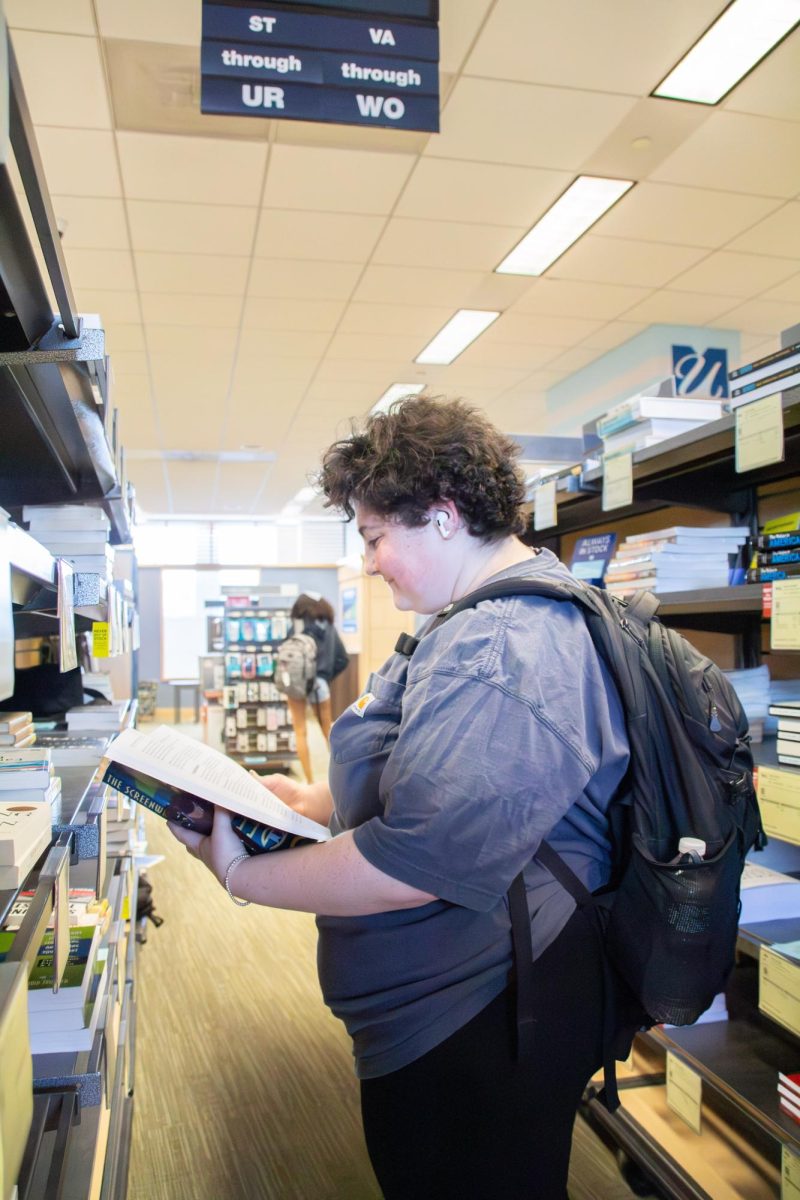The battle for affordable college, dating back as far as the 1940s and ‘50s, has recently been at the forefront of the political sphere after the Supreme Court struck down the Biden administration’s student loan forgiveness plan, especially now that loan payments are set to resume this month, according to Forbes. [1] Every day as a college student is a reminder that wages have stagnated while the world gets more expensive. Even public schools, the so-called affordable option, have gotten exponentially more expensive in the past 50 years. According to U.S. News, tuition and fees for public schools increased 180 percent for in-state students and 144 percent for out-of-state students to a whopping yearly average of $9,800 and $24,000 respectively. [2]
As astounding as these figures are, the costs of textbooks have increased even faster. NBC reported that college textbook prices have risen over 1,000 percent since the 1970s; for comparison, prices on average have risen approximately 50 percent, according to the U.S. Bureau of Labor Statistics. [3, 4] Students spend hundreds or even thousands of dollars on textbooks they may use once for a class they don’t even care about, on top of the tens of thousands they spend on tuition, housing, and living expenses.
This exact phenomenon happens nationwide. According to a study by Florida Virtual Campus, two-thirds of college students reported not buying a textbook required for a class, and nearly 20 percent reported failing out of a class because they couldn’t afford the textbook. [4] Textbooks for STEM majors are even more expensive than those for humanities classes. Personally, my textbooks cost me just under $500—my biology textbook cost $200 alone.
Many poor students come from working-class families and are often the first in their family to attend college. College represents the American dream: If you work hard, do your homework, get a job or three, then maybe—just maybe—you could pull your family out of poverty. Even students with a full-ride scholarship could be forced out of college by exorbitant textbook prices alone, not to mention the fact that housing and food costs are rising just as fast as tuition.
Without fail, every time I complain about how expensive my textbooks are, dozens of well-meaning students jump at the opportunity to tell me how to access them for free—that’s not the point. I already know how to search for “free pdf online,” and I already know that if I buy my textbooks digitally, they’re usually cheaper. No one should have to go digging for affordable textbooks. They should already be affordable.
“Digital rentals” is an oxymoron. Renting a physical textbook is one thing: resources are limited, and if someone doesn’t need the book for another class, why not return it? However, digital resources aren’t subject to the same scarcity. After the textbook is written and published online, an infinite number of people could theoretically own the book, provided they download it locally and it’s not being hosted on a server somewhere. So why do I have to return a digital PDF? The same can be said of subscription services; why should I pay $50 a month to have access to something that isn’t even real?
So why are textbooks so expensive? As always, the answer is monopolies. According to Business Insider, nearly 80 percent of the textbook industry is controlled by just five publishers. [5] These massive corporations regularly release new editions of textbooks to force students to pay competitive prices. Newer editions are often bundled with online resources, and have slightly different page numbers and content, making it more difficult to use the cheaper, older editions.
Just a few states control the content of textbooks. Texas has a near-monopoly on what gets written in textbooks and is a huge contributor to their rising costs, according to the Washington Post. [6] Until 2011, Texas required that schools buy only state-approved textbooks, and although districts are now free to choose their own books, they must still align with Texas’ state curriculum. Because Texas is such a large state, it can cheaply buy textbooks in bulk, and is therefore one of the biggest buyers of textbooks in the country. This also contributes to the whitewashing of history textbooks, which has been a major issue alongside book banning and disputes surrounding “critical race theory” since 2016.
College students are famously one of the poorest populations in the country. Even students who aren’t paying for their own tuition struggle financially; students are forced to choose between their mental health and a job. The $500 I spent on textbooks is half my rent; for many others, that $500 could be the difference between getting groceries or going hungry. Every year, it gets harder to simply survive, let alone spend money on a passing class. It’s the responsibility of schools to make textbooks affordable to everyone, period.
SOURCES:
[1] Minsky, A. S. (2023, Oct. 2). Education Department Unveils Big Student Loan Forgiveness Details for Biden’s New Plan. Forbes. https://www.forbes.com/sites/adamminsky/2023/10/02/education-department-unveils-big-student-loan-forgiveness-details-for-bidens-new-plan/?sh=49289b337a86
[2] Kerr, E., & Wood, S. (2023, Sept. 22). A Look At 20 Years of Tuition Costs at National Universities. U.S. News. https://www.usnews.com/education/best-colleges/paying-for-college/articles/see-20-years-of-tuition-growth-at-national-universities
[3] Popken, B. (2015, Aug. 2). College Textbook Prices Have Risen 1,041 Percent Since 1977. NBC News. https://www.nbcnews.com/feature/freshman-year/college-textbook-prices-have-risen-812-percent-1978-n399926
[4] U.S. Bureau of Labor Statistics. (2016, Aug. 30). College tuition and fees increase 63 percent since January 2006. https://www.bls.gov/opub/ted/2016/college-tuition-and-fees-increase-63-percent-since-january-2006.htm
[5] Echevarria, G., & Bowman, J. (2021, Jan. 26). Why college textbooks are so expensive. Business Insider. https://www.businessinsider.com/why-college-textbooks-expensive-textbook-publishing-2018-12?op=1
[6] Fitt, R. A. (2020, Oct. 19). Conservative activists in Texas have shaped the history all American children learn. The Washington Post. https://www.washingtonpost.com/outlook/2020/10/19/conservative-activists-texas-have-shaped-history-all-american-children-learn/





















































